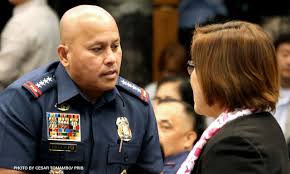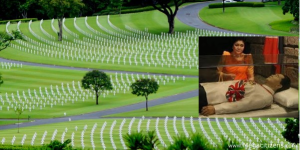Extra judicial killing, as it is defined and understood on the basis of international human rights law, is a criminal act committed by the State against its perceived enemies. In this sense, killings in public that have happened since the inception of the new government can only be construed as extra judicial if proven to be perpetrated by State agents, prime and foremost of which are the police and the military. But in most if not all of the more recent instances that already happened, there was no police or military involvement. In fact, three possibilities that strongly persist are: 1) Broad daylight killings of civilians have been perpetrated by powerful political personalities who are enemies of the present administration as they aim to pin down and destroy the latter’s development platforms ; 2) The big drug lords themselves are into similar murderous spree to silence pushers and users that could implicate them once nabbed and placed under interrogation; and 3) Since many of the powerful political personalities against the present administration have been suspected to be in connivance with big drug lords, they are now into a grand conspiracy to demolish the government’s credibility by murdering civilians in public.
But why are there so many who “cry wolf” now as the new administration seriously gets into targetting with unequalled aggressiveness the mounting evil of illegal drug menace which has been destroying the fiber of Philippine society for so long? Why didn’t the same people display a similar passion when past administrations were extra-judicially killing lumads and religious, peasant and labor activists among others? In this connection, let me quote a lengthy portion of the introductory part of the paper, “THE DISPUTE OVER EXTRAJUDICIAL KILLINGS: THE NEED TO DEFINE EXTRAJUDICIAL KILLINGS AS STATE-SPONSORED ACTS” by Christian D. Pangilinan [Christian D. Pangilinan, The Dispute Over Extrajudicial Killings: The Need to Define Extrajudicial Killings as State-Sponsored Acts, 86 PHIL. L.J. 811, (page cited) (2012):
“The killing and enforced disappearances of political activists have long been part of modern Philippine life—certainly ever since the administration of President Marcos, during which period the Philippines was repeatedly criticized for the deaths of activists from the political left. More recently during the administration of President Arroyo onward, from 2001 to the present, extrajudicial killings and enforced disappearances reemerged in Philippine public consciousness as a drastic rise in their number was reported. Reports conflict on the number of victims. Some suggest that the number cannot be known. Most estimates, though, count them in the hundreds.
“Many credit an increase of killings during the Arroyo administration to its professed goal to eradicate the New People’s Army (NPA)—the Communist Party of the Philippines’ (CPP) armed wing. The NPA has been active since the 1970s and has engaged in on-again, off-again peace negotiations with the government since the administration of President Corazon Aquino. The Arroyo administration’s anti-insurgency campaign swept broadly, targeting not only armed insurgents but also representatives from leftist political parties in the House of Representatives and members of civil society organizations that the military and police labeled, largely without substantiation, as insurgent fronts. In apparent accordance with the administration’s determination that the political left was composed of enemies of the State, numerous organizers, activists, low-level elected officials, leaders of indigenous tribes, and even priests have been assassinated. Regrettably, extrajudicial killings have continued even after the end of the Arroyo administration and the election of ‘Noynoy’ Aquino.”
When past administrations were killing activists and government critics, very few raised their voices and “cried wolf” to prosecute the extra judicial murderers. Now that the present administration is hell-bent to liberate Philippine society from the scourge of heinous crimes perpetrated by big-time illegal drug syndicates, many sectors are aggressively pointing accusative fingers towards government as they raise the issue of “extra judicial killing”.
In the final analysis, it is the grand conspiracy instigated by the old political network mired with corruption and in constant partnership with big-time criminal syndicates that is actively operating now to discredit the new maverick government and destroy its good intentions for the nation.
(c) Ruel F. Pepa, 23 August 2016


